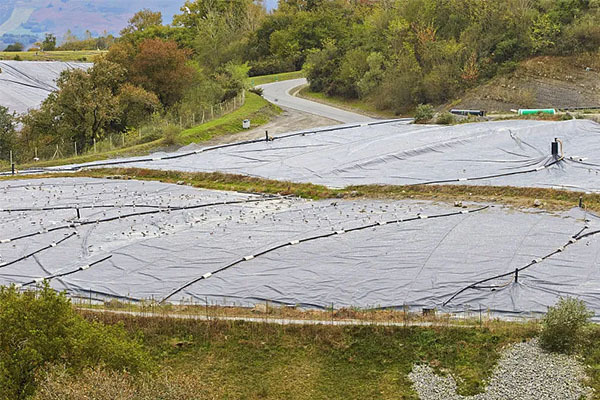Polyethylene Geomembrane: A Versatile and Essential Material
Release time:
2025-06-24
polyethylene geomembrane is a remarkable material with a diverse range of properties that make it indispensable in many fields. Its impermeability, chemical resistance, durability, and flexibility contribute to its wide - spread use in environmental protection, water management, and industrial applications.
Polyethylene geomembrane has emerged as a crucial material in numerous engineering and environmental applications.
I. Introduction to Polyethylene Geomembrane
Polyethylene geomembrane is a synthetic membrane made from polyethylene, which is a thermoplastic polymer. It is typically manufactured in various thicknesses and widths to meet different project requirements. The polyethylene used can be of different densities, such as high - density polyethylene (HDPE) and low - density polyethylene (LDPE), each offering distinct properties.
II. Properties of Polyethylene Geomembrane
Impermeability
One of the most significant properties of polyethylene geomembrane is its extremely low permeability to liquids and gases. This makes it an ideal material for containment applications. For example, in landfill liners, it effectively prevents the leakage of leachate, which is a liquid that contains dissolved and suspended materials from the waste. In wastewater treatment plants, it can be used to line ponds and tanks to stop seepage of wastewater into the surrounding soil and groundwater.
Chemical Resistance
Polyethylene geomembrane shows excellent resistance to a wide range of chemicals. It can withstand exposure to acids, alkalis, and various organic solvents. This chemical resistance property enables it to be used in chemical storage facilities, where it protects the environment from potential chemical spills.
Durability
The material has a high degree of durability. It is resistant to ultraviolet (UV) radiation, which is important for outdoor applications. HDPE geomembrane, in particular, has a long - term resistance to UV degradation. Additionally, it can endure mechanical stress, such as stretching and abrasion, without significant damage. This durability ensures a long service life, reducing the need for frequent replacement.
Flexibility
Polyethylene geomembrane is highly flexible. It can conform to different surface contours, whether it is a flat surface or a sloping terrain. This flexibility is advantageous during installation, as it allows for easy placement and fitting around obstacles. For instance, in canal linings, it can be laid along the irregular shape of the canal bed and sides without much difficulty.
III. Applications of Polyethylene Geomembrane
Environmental Applications
In landfills, as mentioned earlier, polyethylene geomembrane is used as a liner to prevent the contamination of soil and water. It also plays a role in the capping of landfills, helping to contain odors and further prevent the infiltration of rainwater into the waste. In contaminated soil remediation projects, it can be used to isolate the contaminated area, preventing the spread of pollutants.
Water Management
In water reservoirs, polyethylene geomembrane is used to line the interior to reduce water seepage. In irrigation canals, it helps to conserve water by minimizing losses due to seepage into the soil. It is also used in fish ponds to maintain water levels and prevent leakage.
Industrial Applications
In the mining industry, polyethylene geomembrane is used for tailings containment. Tailings are the waste materials left after the extraction of valuable minerals. The geomembrane prevents the tailings from contaminating the surrounding environment. In industrial storage tanks, it serves as a lining to prevent chemical leakage.
IV. Installation and Maintenance of Polyethylene Geomembrane
Installation
The installation of polyethylene geomembrane requires careful preparation of the surface. The surface should be clean, smooth, and free of sharp objects that could puncture the membrane. Specialized installation techniques are used, such as welding for joining different sections of the geomembrane. This welding process ensures a seamless and watertight joint.
Maintenance
Regular inspection of polyethylene geomembrane is necessary to detect any signs of damage, such as punctures or tears. If damage is detected, it should be repaired promptly. In some cases, a protective layer may be placed over the geomembrane to further enhance its durability and protect it from potential damage sources, such as falling rocks in mining applications.
In conclusion, polyethylene geomembrane is a remarkable material with a diverse range of properties that make it indispensable in many fields. Its impermeability, chemical resistance, durability, and flexibility contribute to its wide - spread use in environmental protection, water management, and industrial applications.
Previous Page






